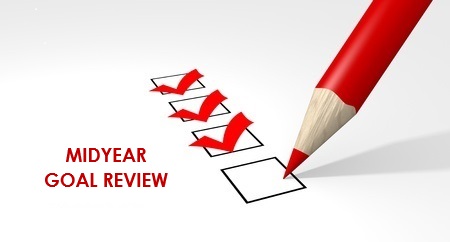We can't find the internet
Attempting to reconnect
Something went wrong!
Hang in there while we get back on track
Dreading Performance Appraisals? 7 Proven Strategies to Ease your Fear & Maximize Employee Potential
Our Article Full Details

Dreading Performance Appraisals? 7 Proven Strategies to Ease your Fear & Maximize Employee Potential
Performance appraisals are a critical component of any organization's employee management strategy. They provide an opportunity to assess an employee's performance, set goals for future development, and provide feedback on areas of improvement. But let's face it, conducting performance appraisals can be daunting for even the most experienced managers. It is challenging to balance the need for honesty and objectivity with the desire to motivate and encourage your employees. Moreover, performance appraisals are often met with a sense of dread by employees, who may view them as a necessary evil rather than an opportunity for growth.
Here are some best practices for conducting effective performance appraisals that can help employers alleviate some of the stress and anxiety associated with the process while creating a continuous improvement and development culture.
Establish clear objectives
Before conducting a performance appraisal, you should establish clear objectives for the meeting. These objectives should be specific, measurable, achievable, relevant, and time-bound. You should also communicate these objectives to the employee in advance so that they can prepare adequately for the meeting. Having clear goals ensures that the meeting is productive and that you and the employee are on the same page.
Create a comfortable environment
Choose a location that is private and free from distractions. Also, ensure that the employee feels comfortable and at ease during the meeting. This can be achieved by being friendly, approachable, and attentive.
Provide constructive feedback
One of the main objectives of a performance appraisal is to provide feedback to the employee. Feedback must be constructive and specific and focus on both the employee's strengths and areas of improvement. Seek to also provide specific incidents where the employee performed well or could have done better, in a respectful and professional way.
Set clear goals
These goals should be realistic, achievable, and aligned with the employee's strengths and areas of improvement. Also ensure that the goals are SMART (specific, measurable, and time-bound). Setting clear goals can provide employees with a roadmap for success and ensure they are motivated and engaged.
Encourage employee participation
During the performance appraisal, encourage the employee to participate actively. This can be achieved by asking open-ended questions and actively listening to their responses. It would be best to allow the employee to give feedback on their performance and ask questions about the appraisal process. By having the employee participate, the appraisal becomes a two-way conversation and the employee feels valued and respected.
Document the appraisal
After the performance appraisal, document the results of the meeting. This documentation includes the objectives of the meeting, feedback provided, goals set, and any other relevant information. Ensure that your documentation is factual, objective, and free from bias. This will ensure a clear record of the employee's performance and progress.
Follow up regularly
Following up regularly after the performance appraisal is essential for ensuring that the employee stays on track towards their goals. Regular follow-up can be achieved through one-on-one meetings, coaching, and mentoring. Similarly, give the employees regular feedback on their progress towards their goals. They will then stay motivated and engaged and want to continue improving their performance.
Performance appraisals are a crucial tool for employers to evaluate their employees' progress, provide constructive feedback, and motivate them towards achieving their goals. However, effective performance appraisals require careful planning, communication, and implementation.
Therefore, an employer must create a positive and productive work culture that encourages growth, learning, and development.
By following these best practices, you can maximize the benefits of performance appraisals and help your employees thrive in their roles. When you value and invest in your employees, you will foster a loyal and engaged workforce committed to achieving the organization's goals.
Here are some best practices for conducting effective performance appraisals that can help employers alleviate some of the stress and anxiety associated with the process while creating a continuous improvement and development culture.
Establish clear objectives
Before conducting a performance appraisal, you should establish clear objectives for the meeting. These objectives should be specific, measurable, achievable, relevant, and time-bound. You should also communicate these objectives to the employee in advance so that they can prepare adequately for the meeting. Having clear goals ensures that the meeting is productive and that you and the employee are on the same page.
Create a comfortable environment
Choose a location that is private and free from distractions. Also, ensure that the employee feels comfortable and at ease during the meeting. This can be achieved by being friendly, approachable, and attentive.
Provide constructive feedback
One of the main objectives of a performance appraisal is to provide feedback to the employee. Feedback must be constructive and specific and focus on both the employee's strengths and areas of improvement. Seek to also provide specific incidents where the employee performed well or could have done better, in a respectful and professional way.
Set clear goals
These goals should be realistic, achievable, and aligned with the employee's strengths and areas of improvement. Also ensure that the goals are SMART (specific, measurable, and time-bound). Setting clear goals can provide employees with a roadmap for success and ensure they are motivated and engaged.
Encourage employee participation
During the performance appraisal, encourage the employee to participate actively. This can be achieved by asking open-ended questions and actively listening to their responses. It would be best to allow the employee to give feedback on their performance and ask questions about the appraisal process. By having the employee participate, the appraisal becomes a two-way conversation and the employee feels valued and respected.
Document the appraisal
After the performance appraisal, document the results of the meeting. This documentation includes the objectives of the meeting, feedback provided, goals set, and any other relevant information. Ensure that your documentation is factual, objective, and free from bias. This will ensure a clear record of the employee's performance and progress.
Follow up regularly
Following up regularly after the performance appraisal is essential for ensuring that the employee stays on track towards their goals. Regular follow-up can be achieved through one-on-one meetings, coaching, and mentoring. Similarly, give the employees regular feedback on their progress towards their goals. They will then stay motivated and engaged and want to continue improving their performance.
Performance appraisals are a crucial tool for employers to evaluate their employees' progress, provide constructive feedback, and motivate them towards achieving their goals. However, effective performance appraisals require careful planning, communication, and implementation.
Therefore, an employer must create a positive and productive work culture that encourages growth, learning, and development.
By following these best practices, you can maximize the benefits of performance appraisals and help your employees thrive in their roles. When you value and invest in your employees, you will foster a loyal and engaged workforce committed to achieving the organization's goals.
Prev
Celebrating Women in Leadership: Ways to Honor Women in your Workforce
Next
The Burnout Battle: A Manager's Guide to Supporting Employee Well-Being





